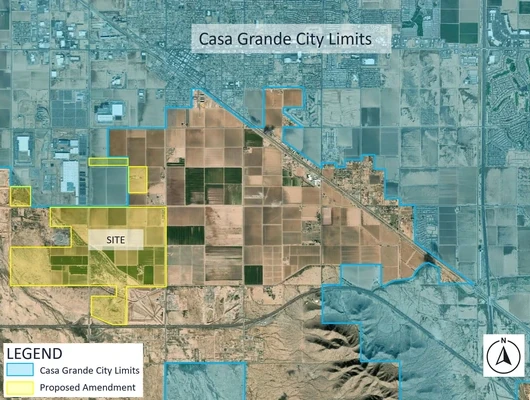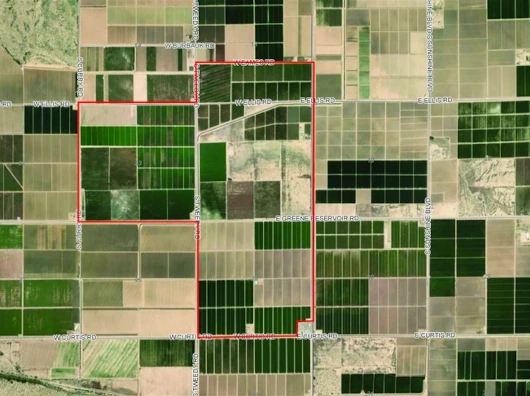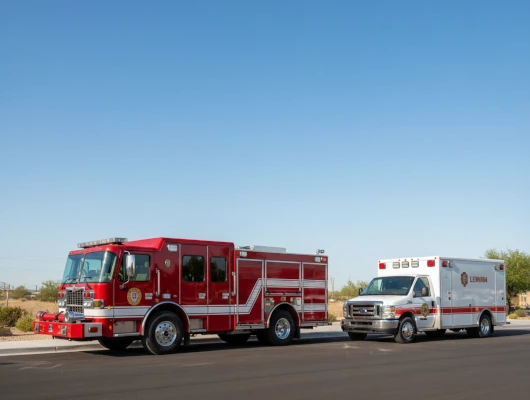In the inaugural episode of “Pinal Unlocked,” host Shane Doughty provides an inside look at Pinal County as he sits down with Pinal County Deputy County Manager Himanshu Patel to demystify county government operations and explore the challenges and opportunities facing this rapidly growing Arizona county.
From Rural India to Pinal County Leadership
Himanshu Patel’s journey to becoming a key figure in Pinal County’s administration is as fascinating as it is unconventional. Born in rural India, where his family engaged in traditional farming with oxen and manual labor, Patel immigrated to the United States in 1980 at the age of eight. He settled in rural Tennessee, where the agricultural environment felt familiar, albeit with significantly more advanced technology.
Patel’s passion for geography eventually led him to pursue community planning at the University of Arizona. After graduate school, he began his career with the Central Arizona Council of Governments (CAG), a regional planning organization that represents all cities and towns in Pinal County. This role allowed him to build relationships throughout the region before becoming Town Manager of Florence in 2001, a position he held for 11 years before transitioning to Pinal County in 2013.
County Government Structure and Operations
As Deputy County Manager, Patel is part of a leadership team that includes the County Manager and two other Deputy County Managers, each overseeing several departments. He distinguishes between internal service departments (like IT, Fleet Services, and Facilities Management) that support county operations and external service departments that directly serve the public.
Pinal County’s governance structure hinges on five supervisory districts, collectively forming the Board of Supervisors, which establishes policies implemented by the county administration. Each district maintains offices where constituents can access numerous county services, although some specialized services, like Superior Court, remain centralized in Florence.
The county operates as a political subdivision of the state of Arizona, meaning it can only perform functions explicitly authorized by state law. This creates a complex relationship requiring legislative action to change laws when the county seeks to modify or expand its capabilities.
Growth and Economic Development
One of the most significant changes in Pinal County over recent years has been the diversification of its economy. Historically reliant on natural resources and agriculture, the county experienced substantial residential growth as pressure expanded from neighboring Maricopa County, creating what Patel describes as a “bedroom community” where residents lived in Pinal but worked elsewhere.
However, the past five years have seen remarkable non-residential growth, with major employers like Lucid Motors establishing operations in the county. Patel attributes this industrial development to strategic infrastructure advantages, including the intersection of I-8 and I-10 highways and railway access. Future infrastructure plans include a potential new interstate corridor connecting Las Vegas to Nogales, Arizona, traversing western Pinal County.
Land Ownership and Development Challenges
A surprising statistic revealed during the interview is that only roughly 30% of Pinal County land is privately owned, with another 33% designated as state trust land and the remainder under federal or tribal control. This limited availability of private land creates unique development challenges.
Patel explains that state trust lands—often mistaken for permanent open space—are actually intended to generate revenue for beneficiaries like schools and universities. When market conditions are favorable, these lands are auctioned to the highest bidder, converting them from non-taxable public land to private development that contributes to the county tax base.
Water Resources and Management
Water emerged as a critical topic during the discussion. Patel described the complex regulatory structure governing water in Arizona, particularly distinguishing between surface water (visible in canals) and groundwater (accessed through wells).
The state has established Active Management Areas (AMAs) based on underground aquifer mapping and population projections. These AMAs have specific rules to ensure sustainable water supplies for the next 100 years, with developments requiring certificates of assured water supply. However, areas outside these AMAs have fewer regulations, creating potential sustainability concerns as more wells tap into shared aquifers.
Zoning, Development, and Public Engagement
The recent controversy over proposed updates to the county’s zoning code dominated the latter part of the conversation. Pinal County’s current zoning code, last comprehensively updated in 2012, is undergoing revision to address accumulated issues identified by residents and officials over the years.
Following public pushback on proposed changes, the Board of Supervisors suspended the update process. Patel views this engagement positively, despite the controversy, noting, “I think that’s great that they got engaged… it’s a wake-up call.” The county now plans to conduct stakeholder meetings across all five districts to gather feedback on code revisions in manageable segments.
Finding the balance
As Pinal County continues to evolve from a primarily agricultural and resource-based economy to one with increasing industrial and residential development, Patel emphasizes the importance of balancing growth with quality of life considerations. The ongoing challenge will be maintaining harmony between urban and rural interests while managing limited resources like water and privately developable land.
The interview concludes with Patel expressing optimism about increased public engagement in county governance and suggesting that forums like the “Pinal Unlocked” podcast could help educate residents about upcoming policy changes and opportunities for input.
This article summarizes the inaugural episode of “Pinal Unlocked,” a podcast focused on Pinal County government and community affairs.






